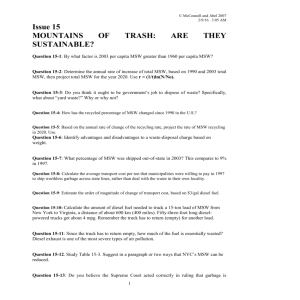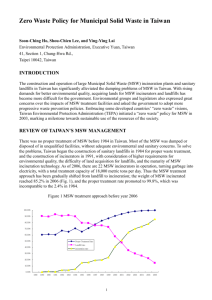Problem Statement
advertisement
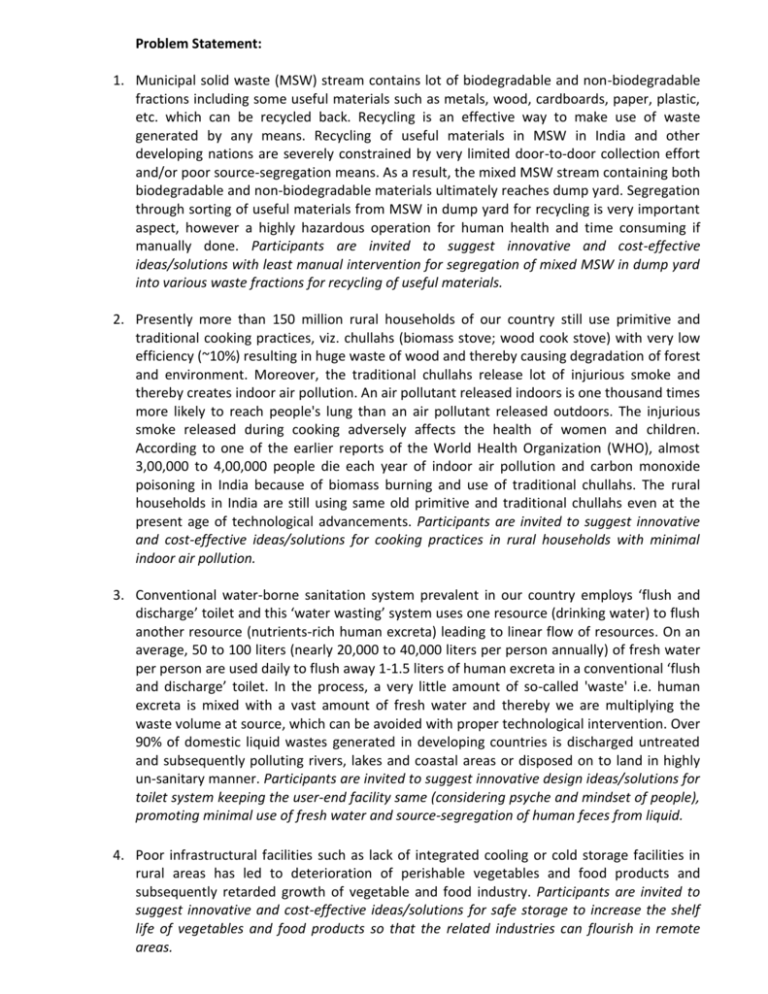
Problem Statement: 1. Municipal solid waste (MSW) stream contains lot of biodegradable and non-biodegradable fractions including some useful materials such as metals, wood, cardboards, paper, plastic, etc. which can be recycled back. Recycling is an effective way to make use of waste generated by any means. Recycling of useful materials in MSW in India and other developing nations are severely constrained by very limited door-to-door collection effort and/or poor source-segregation means. As a result, the mixed MSW stream containing both biodegradable and non-biodegradable materials ultimately reaches dump yard. Segregation through sorting of useful materials from MSW in dump yard for recycling is very important aspect, however a highly hazardous operation for human health and time consuming if manually done. Participants are invited to suggest innovative and cost-effective ideas/solutions with least manual intervention for segregation of mixed MSW in dump yard into various waste fractions for recycling of useful materials. 2. Presently more than 150 million rural households of our country still use primitive and traditional cooking practices, viz. chullahs (biomass stove; wood cook stove) with very low efficiency (~10%) resulting in huge waste of wood and thereby causing degradation of forest and environment. Moreover, the traditional chullahs release lot of injurious smoke and thereby creates indoor air pollution. An air pollutant released indoors is one thousand times more likely to reach people's lung than an air pollutant released outdoors. The injurious smoke released during cooking adversely affects the health of women and children. According to one of the earlier reports of the World Health Organization (WHO), almost 3,00,000 to 4,00,000 people die each year of indoor air pollution and carbon monoxide poisoning in India because of biomass burning and use of traditional chullahs. The rural households in India are still using same old primitive and traditional chullahs even at the present age of technological advancements. Participants are invited to suggest innovative and cost-effective ideas/solutions for cooking practices in rural households with minimal indoor air pollution. 3. Conventional water-borne sanitation system prevalent in our country employs ‘flush and discharge’ toilet and this ‘water wasting’ system uses one resource (drinking water) to flush another resource (nutrients-rich human excreta) leading to linear flow of resources. On an average, 50 to 100 liters (nearly 20,000 to 40,000 liters per person annually) of fresh water per person are used daily to flush away 1-1.5 liters of human excreta in a conventional ‘flush and discharge’ toilet. In the process, a very little amount of so-called 'waste' i.e. human excreta is mixed with a vast amount of fresh water and thereby we are multiplying the waste volume at source, which can be avoided with proper technological intervention. Over 90% of domestic liquid wastes generated in developing countries is discharged untreated and subsequently polluting rivers, lakes and coastal areas or disposed on to land in highly un-sanitary manner. Participants are invited to suggest innovative design ideas/solutions for toilet system keeping the user-end facility same (considering psyche and mindset of people), promoting minimal use of fresh water and source-segregation of human feces from liquid. 4. Poor infrastructural facilities such as lack of integrated cooling or cold storage facilities in rural areas has led to deterioration of perishable vegetables and food products and subsequently retarded growth of vegetable and food industry. Participants are invited to suggest innovative and cost-effective ideas/solutions for safe storage to increase the shelf life of vegetables and food products so that the related industries can flourish in remote areas. 5. A major part of domestic wastewater of the Patna city is discharged in to the local water bodies situated in the outskirts of the city and thereby water bodies are becoming polluted. Domestic wastewater contains a lot of nutrients (i.e. nitrogen and phosphorous) and disposal of such wastes leads to formation of micro planktons and zooplanktons. As a result, algae are flourishing and speedily covering up the entire water bodies and thus making the water unfit for any beneficial uses. Participants are invited to suggest innovative ideas/solutions for removing the fast-growing algae from the ponds as well as making it a resource for villagers. 6. Trash and garbage, which are a common sight in urban and rural areas of India area major source of pollution. Indian cities alone generate more than 100 million tons of solid waste a year. In the absence of an effective waste segregation and recycling scheme, landfills have been the most common methods of organized waste disposal. However, landfills have adverse impacts such as pollution of the local environment, contamination of groundwater through leakage or sinkholes, residual soil contamination during landfill usage, off gassing of methane generated by decaying organic wastes, harboring of disease vectors such as rats and flies, injuries to wildlife, and simple nuisance problems (e.g., dust, odor, or noise pollution). Moreover, with increasing population and ever-increasing rate of waste generation, landfills are becoming a concern, not just of environmental importance, but of economic concern, too. Waste sorting is the process by which waste is separated into different elements such that disposal and treatment schemes can be implemented as appropriate. Waste sorting can occur manually at the household and collected through municipal collection schemes. In this regard, segregation of the Dry and Wet Waste is becoming an important concern. Dry waste includes wood and related products, metals and glass. Wet waste, typically refers to organic waste usually generated by eating establishments and households and are heavy in weight due to dampness. Innovative ideas to design an automatic waste separator that can segregate the wet waste from the dry counterpart in energy efficient manner is the need of the time. Participants are requested to propose a mechanical design for an automatic and energy efficient dry and wet waste separator.
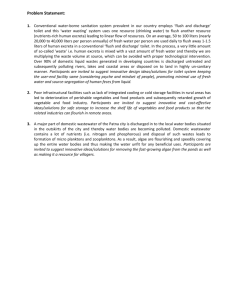
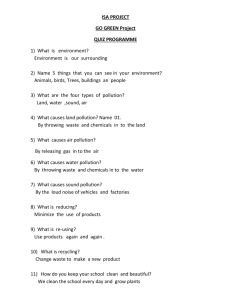
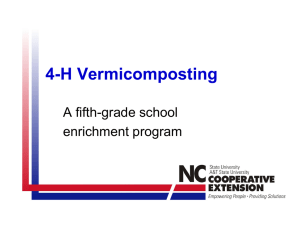




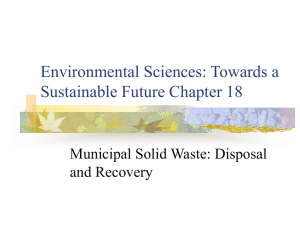
![School [recycling, compost, or waste reduction] case study](http://s3.studylib.net/store/data/005898792_1-08f8f34cac7a57869e865e0c3646f10a-300x300.png)

